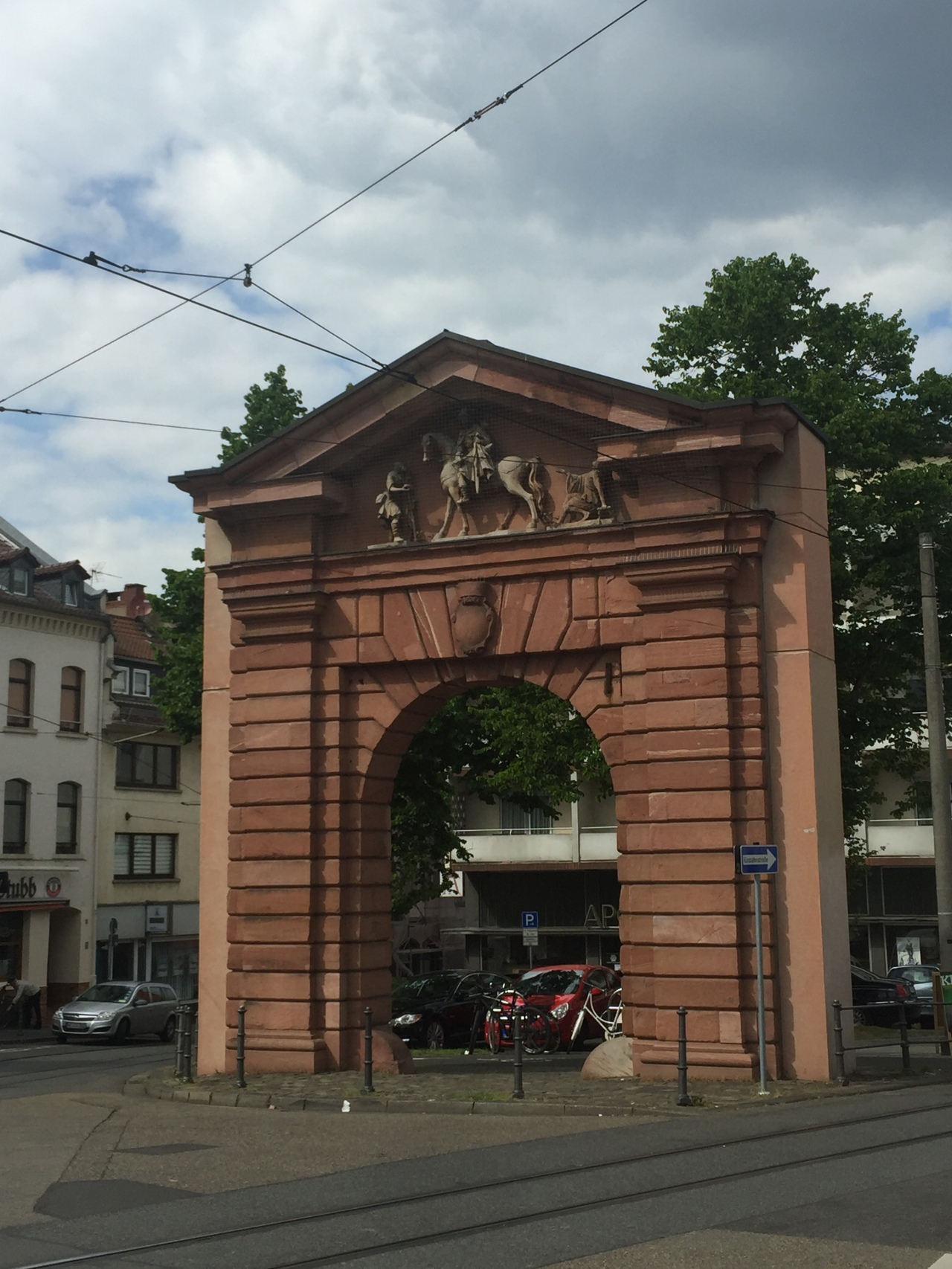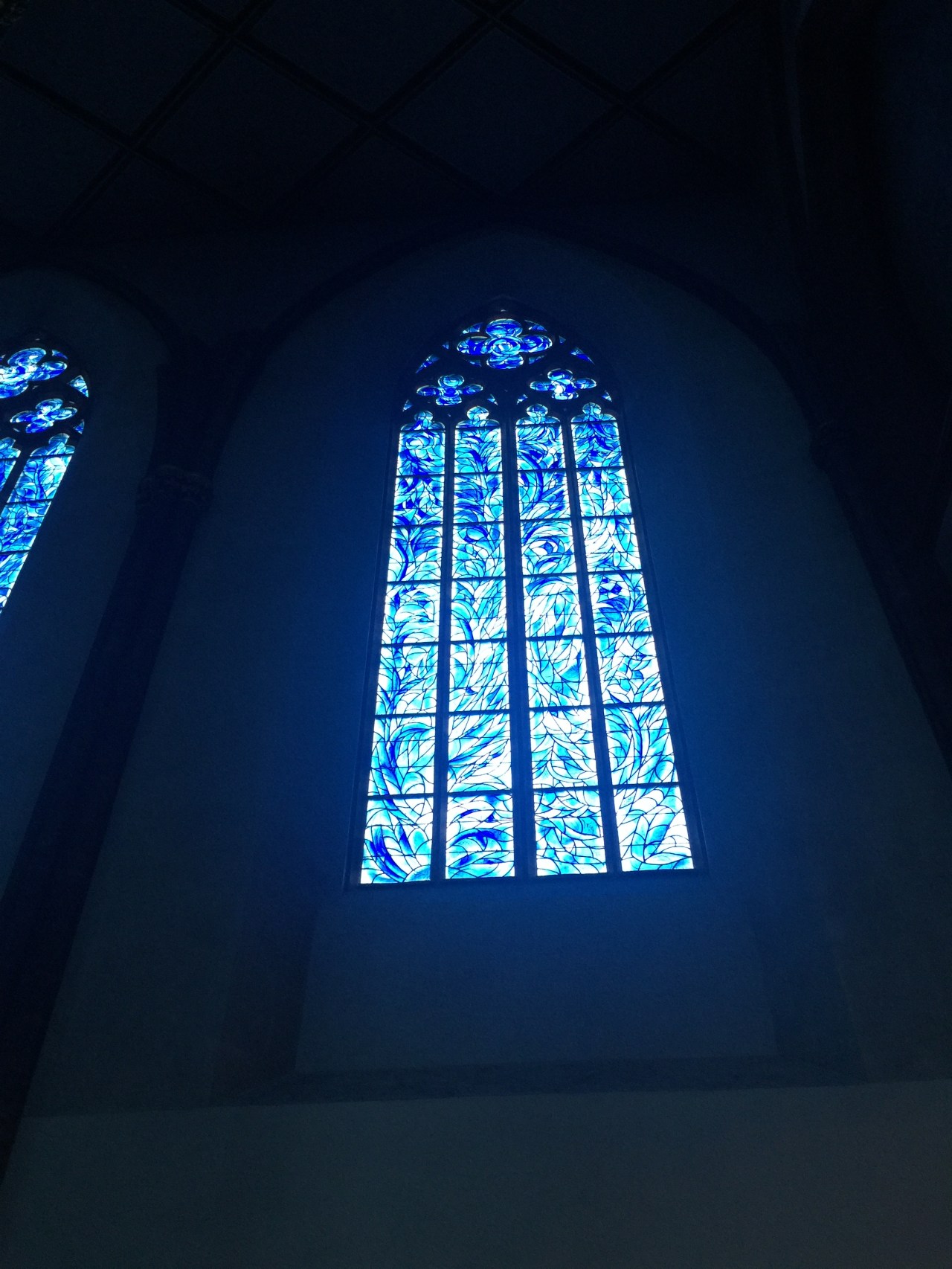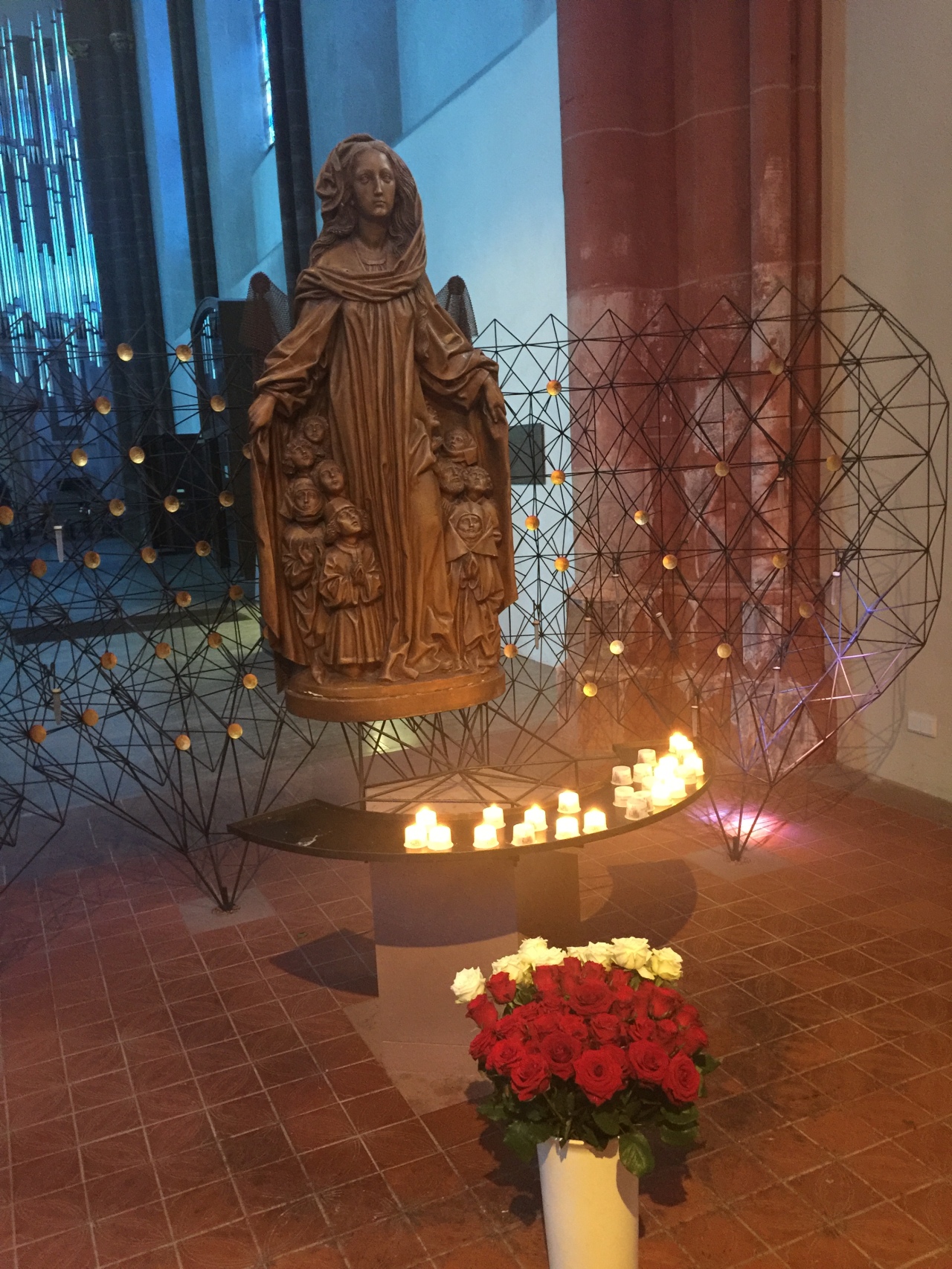The Mainz Tourist Centre, conveniently situated a couple of streets off the market place by the Brueckenturm, is highly recommended if you are visiting Mainz, whether for a few hours, days or longer.
We got a general feel for Mainz wandering through the old town centre and markets (see last week’s post here) – we prefer to absorb the atmosphere of a place first rather than heading off to tick off tourist lists. There are several churches of interest including Mainz Cathedral, museums such as the State Museum, Kunsthalle (Art Gallery) and the famous Gutenberg Museum, to name but a few.
With such a plethora of possibilities, we found it was easier to pick up some guide books from the tourist information centre and work out what we would like to see in the time available, bearing in mind we also wanted to take some day trips out of Mainz during our 6 day trip to Germany.
St Martin’s Cathedral (Mainzer Dom), towering over the market place, seemed an obvious starting point. Founded in 975 AD during the time of Archbishop Willigis, who was a powerful religious and political figurehead, it has survived fires, wars and other dramas over the centuries. A combination of Romanesque, Gothic and Baroque styles, we found the building striking though somewhat dark and oppressive. The Treasury, displaying a wide array of jewels, precious objects and artefacts relating to the Prince Archbishops, was worth a visit though some of the artwork in the modern gallery was not exactly to our taste! I have only got a few photos from the cathedral cloisters and some taken inside the cathedral – I think photography wasn’t permitted inside the treasury or I would have taken more. The light also made it hard to get some reasonable shots.
By contrast we found the beautiful stained glass of St Stephan’s Church (Stephanskirche) more to our liking – it was an exquisite contrast to the dark stone of the rest of the interior. Situated on St Stephan’s Mount across the town from the market place area it was well worth the walk uphill (though you can also take a tram). If you do take a tram you get off near this impressive looking arch (I didn’t note down its significance!).

The soft pretty blue hues of the St Stephan windows have a special story behind them as the beautiful stained glass was designed by the Jewish artist Marc Chagall (1887-1985) as a symbol of Jewish Christian reconciliation in the 1970s. I was so enthralled by their dreamy and ethereal beauty I took dozens of photos! The patterns I think represent angel wings and there are some biblical figures.

The church, which was another of Archbishop Willigis’s commissions (he was actually buried here in 1011), had been more or less demolished during the 2nd World War and was eventually rebuilt. The idea to ask Chagall to design the windows came in the 1970s when Monsignor Klaus Mayer established contact with the artist. Chagall had been born in Russia but spent most of his life in France, aside from his time in the USA as a refugee from the Nazis in the 2nd World War. He was reluctant at first (not understandably) given the horrific events of the wartime period and ambivalent feelings towards Germany but came to see the project as a reconciliatory one bringing hope for the future. Despite being an honorary citizen of Mainz he never visited the city.

The first Chagall window was installed in 1978 when Chagall was 91. Eight more were subsequently fitted including one he completed just before his death at the ripe old age of 97. Fortunately his pupil Charles Marq (from the Atelier Jacques Simon in Reims), who had worked with Chagall for many years, completed a more simple series of windows, which were fitted in the side aisles 19 years later.
We decided that a visit to the Gutenberg Museum was a must and were certainly not disappointed. Johannes Gutenberg (1400-1468), an engraver, inventor and printer, is one of Mainz’s most famous sons and introduced the printing press to Europe. The highlight was seeing the priceless Gutenberg Bibles preserved in special cases in a darkened room (no photos allowed). There were also several other exhibitions covering the history of printing in general not only from Europe but calligraphy from the East. Many original machines and other printing devices were also on display. In fact you could have probably spent a whole day there if you were a serious printing enthusiast. We did a good couple of hours plus a visit to the gift store, which had some excellent gift ideas including little printing and craft sets, which I picked up for our granddaughters back home in Australia.
Another unexpected highlight came towards the end of our visit to the museum when we decided to head down into the basement to see the advertised demonstration of the reconstructed printing press used in Gutenberg’s time. We found, however, that it had been cancelled as they were holding a practice session for one of the staff members who was training to be a guide for French tour parties (though she was a native German speaker). Fortunately they kindly allowed us to sit in on the session provided we didn’t mind that the demonstration was in French. Monsieur and I can get by on French learnt at school and on our travels so we had the curious spectacle of watching Germans speaking French and forgetting all the technical names for the printing paraphernalia (many of which I wouldn’t have known in English!).
Then to my embarrassment I got hauled up on stage as the assistant! Since I can speak more German than French these days I kept reverting to German when I was trying to speak French and the poor flustered lady demonstrator forgot all the technical French words and kept breaking into English mixed with some German. It must have looked hilarious to other onlookers (a small crowd had gathered by this stage)! Monsieur recorded it all for posterity but I did get to take home a replica print of a page from the Gutenberg Bible!
There are more museums and places of historical interest in and around Mainz and this is just a selection of the highlights. Over the next few weeks I’ll be covering some of the day trips we took in the region – we packed quite a lot into our 6 days in the Rhineland area!
Copyright © 2019 Rosemary Thomas Le Chic En Rose. All rights reserved
























Aaagh. Switching between languages, even when you speak them well is dreadful. But this tour of Mainz has really whetted my appetite. Thank you!
LikeLiked by 1 person
It’s funny how the brain gets confused – no idea how those simultaneous interpreters at international conferences or the United Nations manage! Mainz is a lovely place and perhaps not one that people would immediately think of to visit 🙂
LikeLiked by 1 person
You’ve convinced me! And I’ll go with my husband, who speaks fluent German, which is a language I don’t speak at all. And we’ll stick to just the two languages…..
LikeLiked by 1 person
Admire anyone who can speak fluent German – it’s hard to learn! I can do good conversational level now but wouldn’t describe myself as fluent! You’ll be well away if you have a translator with you and anyway most people do speak some English in the Mainz area!
LikeLiked by 1 person
Pride forces me to at the least try to communicate in shops and so on. Yes, Germans generally are great at speaking English.
LikeLiked by 1 person
I think even just knowing a few words is helpful as people appreciate you making the effort!
LikeLike
That’s what comes of being multi lingual 😘. Stained glass is so beautiful, isn’t it? 💕
LikeLiked by 1 person
Not that multi lingual Jo – my French is somewhat rusty now though it does come back when you need to use it (a bit!). German’s up to conversational level though hardly fluent! The stained glass is so beautiful and the photos don’t do it justice – the light effects with the soft blues were just gorgeous. Have never seen stained glass windows like it before 🙂 🙂 Hope all’s well with you – will come over to read up on your walks now! 🙂
LikeLiked by 1 person
What great experiences! I have always loved Chagall so seeing those windows was thrilling for me!
LikeLiked by 1 person
Thanks Kerry – it was an amazing experience the blues are so beautiful and the photos don’t really do them justice!
LikeLike
Amazing work by Chagall, wonderful that he saw it as a reconciliation project. Well done you for assisting the demonstrator, I think I would have chickened out😄
LikeLiked by 1 person
It was one of those situations where I didn’t have much choice Gilda as we’d asked them to let us sit on their training session! It was a good work out trying to pull that lever down! We were very moved by the Chagall windows not only by their beauty but by the symbolism behind them – a reconciliation project alas still needed today so it would seem, But a beautiful positive message for the future 🙂
LikeLiked by 1 person